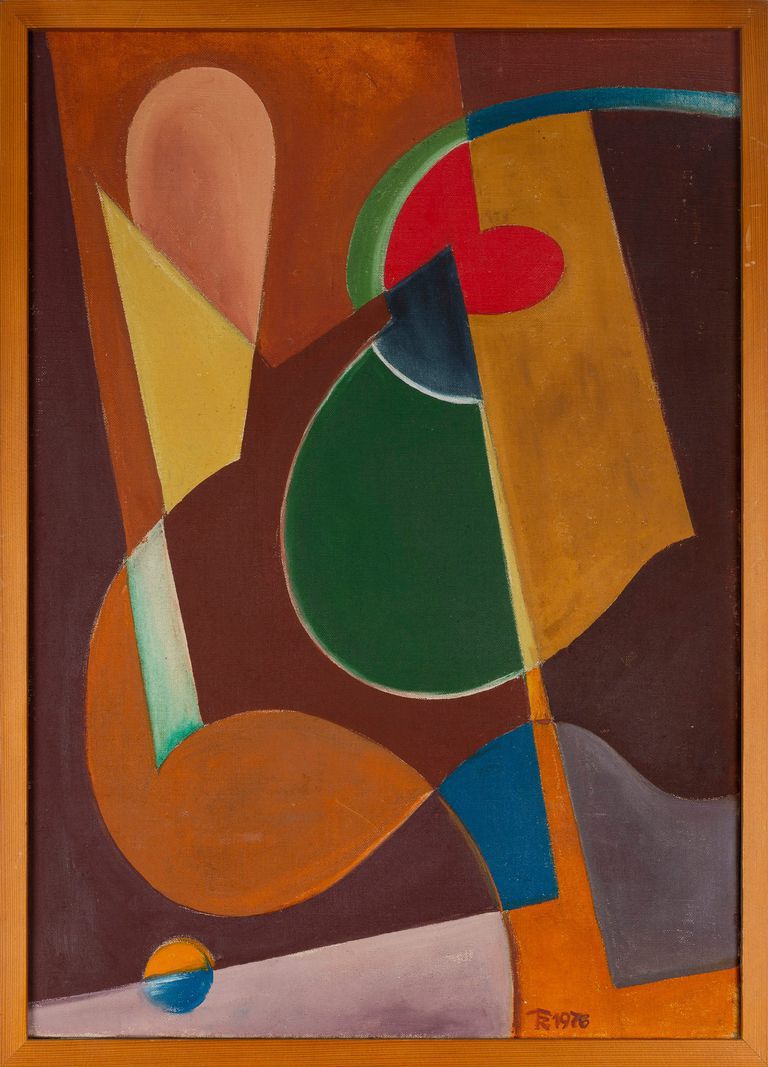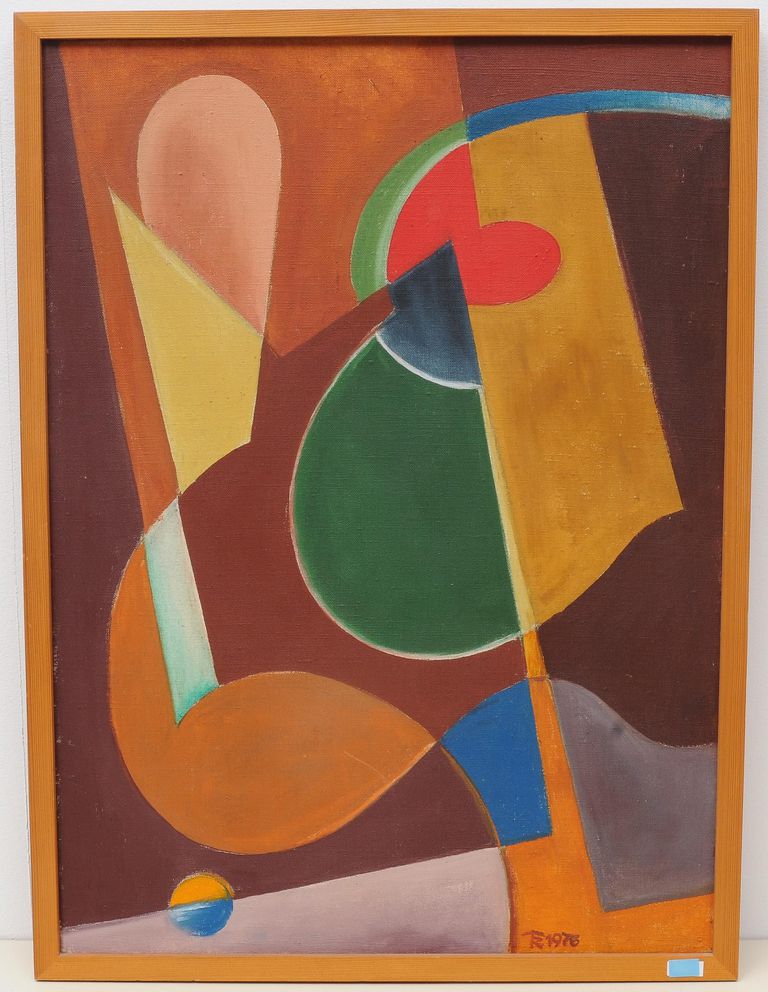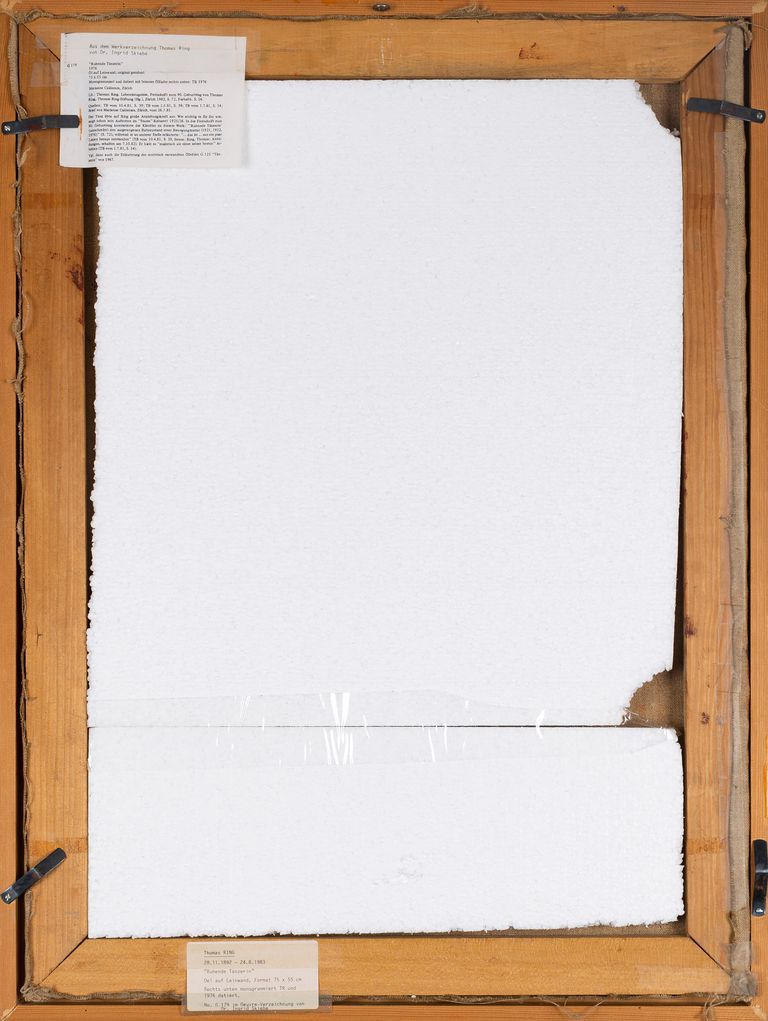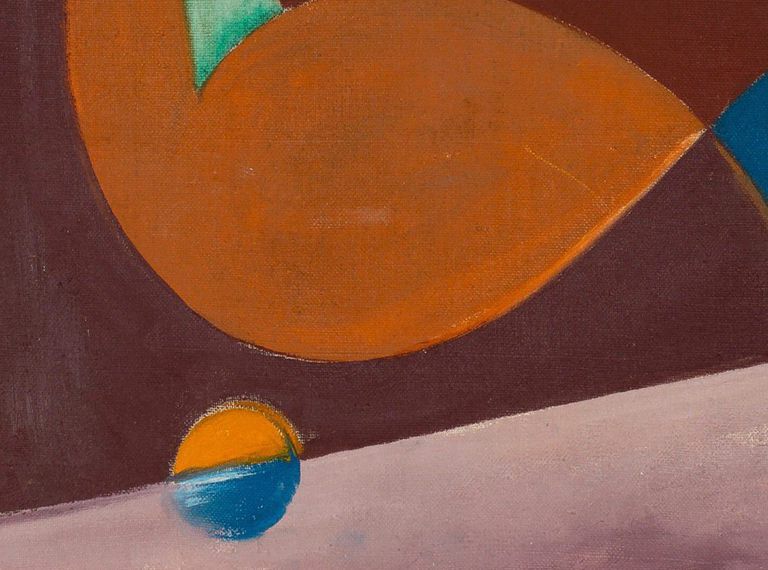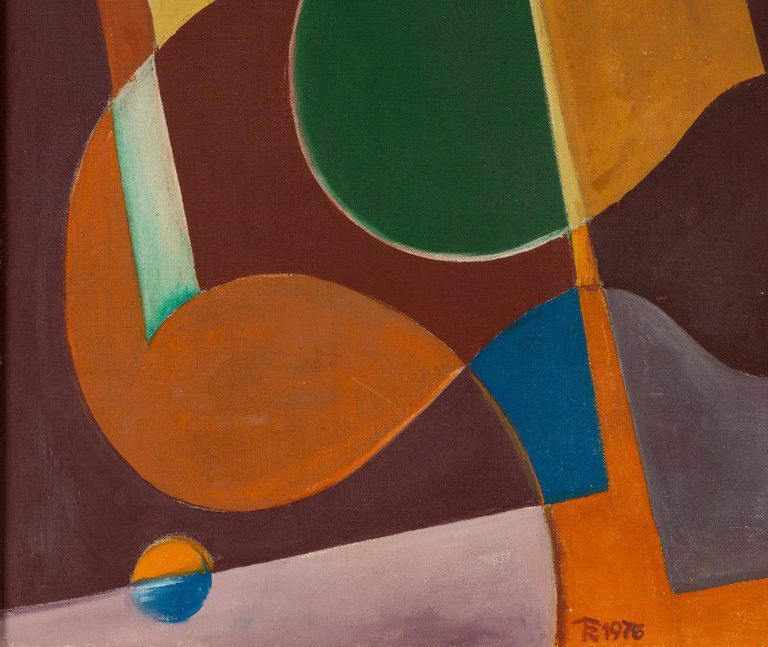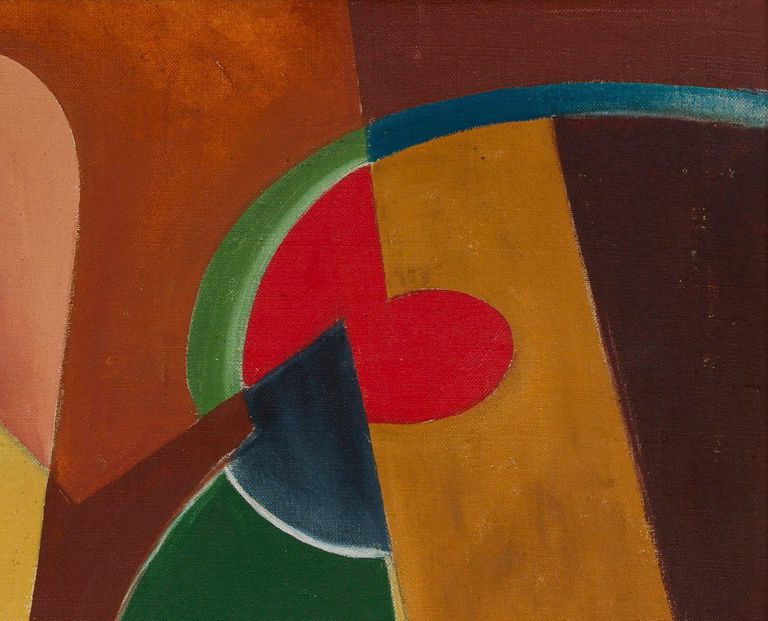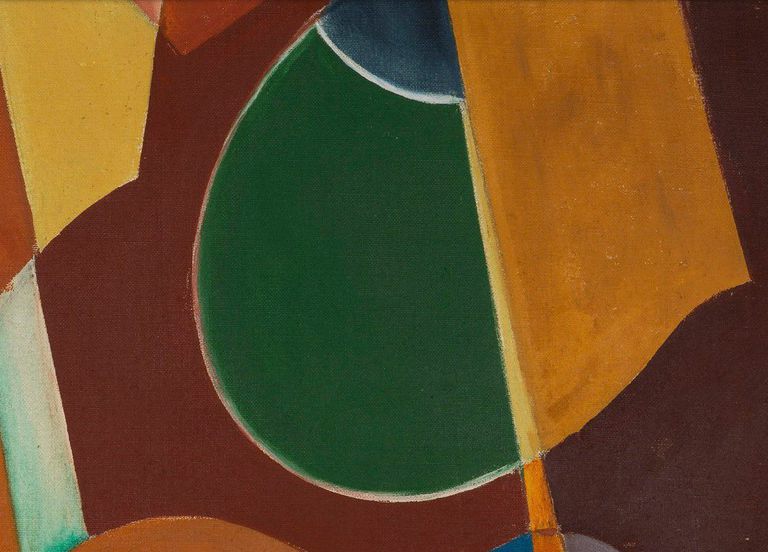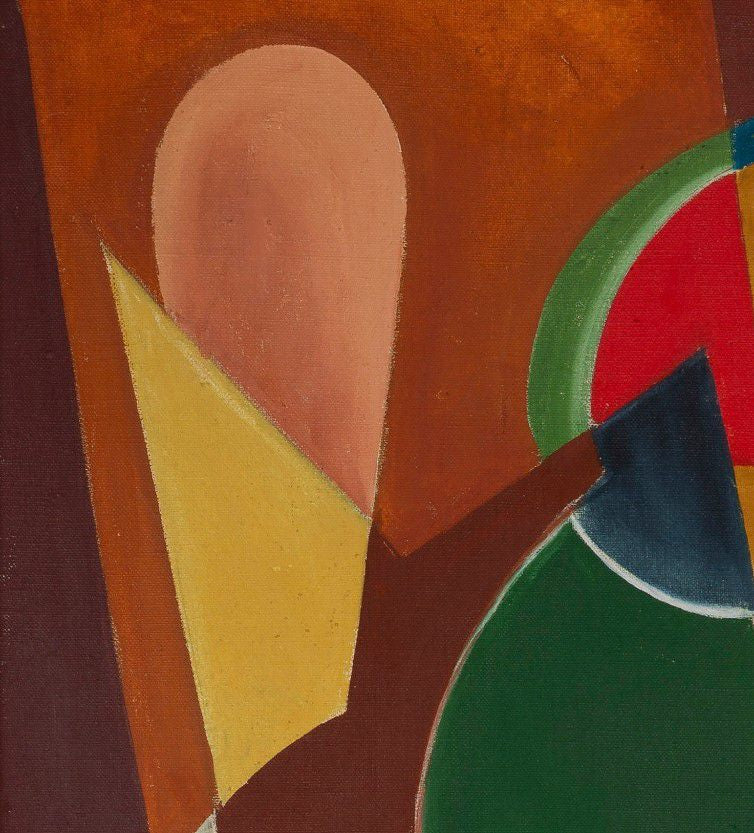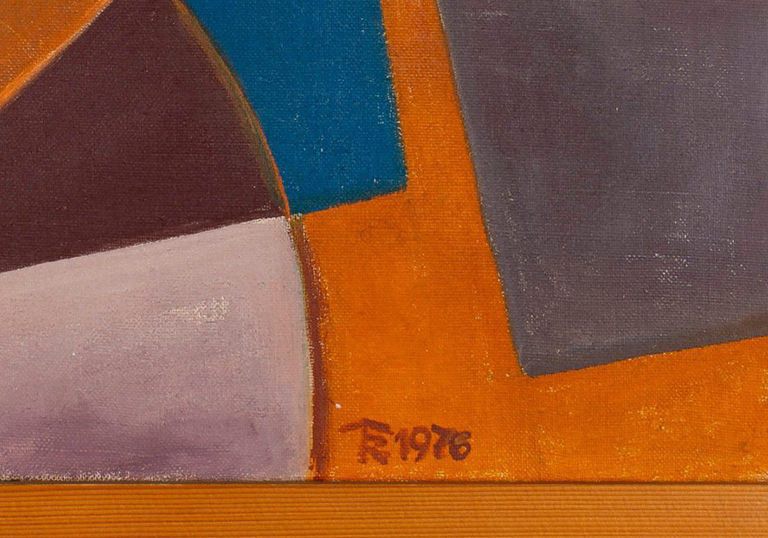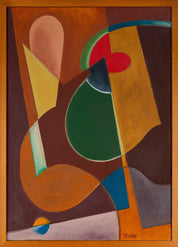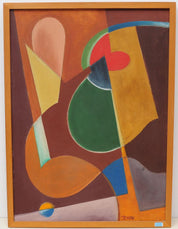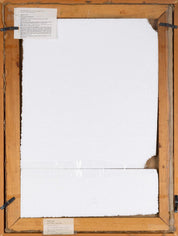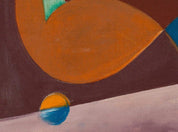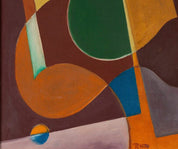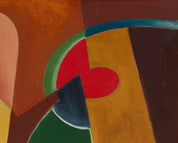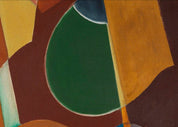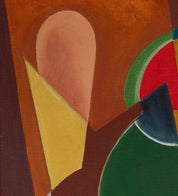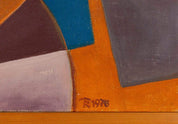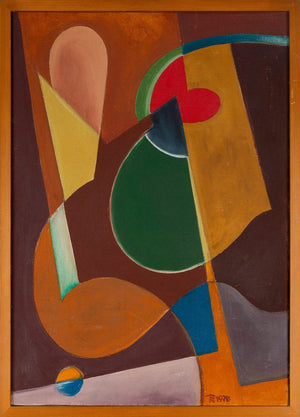Similar Items
Thomas Ring, ''Resting Dancer''
Thomas Ring
Artwork Details
Artist:
Thomas Ring
Dimensions:
75.2 x 55 cm
Medium:
Oil Painting
Style:
Abstract
Theme:
Abstract
Artwork Description
"Resting Dancer" by Thomas RingThomas Ring's abstract composition, 'Resting Dancer,' is a mesmerizing display of meticulously arranged geometric shapes that showcase the artist's command over color, form, and harmony. The artist's deliberate use of warm and cool colors, combined with the intricate arrangement of shapes, creates a visual symphony that captures the viewer's attention.
Details:
Artist: Thomas Ring
Title: "Resting Dancer"
Date: 1976
Medium: Oil on canvas
Dimensions: 75.2 x 55 cm
Signature and Date: Lower right corner
Provenance: Private collection, previously owned by Marianne Calderara (Astrologer and student of Thomas Ring)
Literature: Skiebe, Ingrid: Thomas Ring - a painter from the circle of "Storm." Life, style-critical analysis and catalog raisonné. Herzberg 1988, No. G 179.
Condition Report: In overall good condition.
Description:
Thomas Ring's artwork "Resting Dancer," executed in 1976, is a vibrant abstract composition that commands attention through its meticulous arrangement of geometric shapes and harmonious color palette. The artist's masterful use of warm colors dominates the composition, with cooler hues acting as subtle accents that define the spaces between shapes.
The painting's central focus is the intricate arrangement of geometric forms that seem to dance across the canvas. Each shape, carefully selected by the artist, is adorned with a vibrant hue that contributes to the overall chromatic harmony of the piece. The careful juxtaposition of colors and shapes creates a rhythmic visual experience, guiding the viewer's gaze across the canvas in a dynamic exploration.
Ring's use of warm colors, such as rich oranges and deep reds, imparts a sense of warmth and energy to the composition. These colors are carefully balanced by cooler tones like blues and greens, which serve as punctuation marks and help delineate the boundaries between shapes. This interplay of warm and cool tones contributes to the visual dynamism of the artwork.
The artist's brushwork is intentionally flat, allowing the geometric mosaic and juxtaposition of colors to take center stage. This stylistic choice emphasizes the precision of the composition while minimizing any distractions. The result is a harmonious interplay of colors and forms that captivates the viewer's eye.
About the Artist:
Thomas Ring was born in 1892 in Hoefen-Muggenhof close to Nuremberg. After his education as chemigraph and designer,
he joined in 1913 the graphic class of Emil Orlik in Berlin.Fellow students were George Grosz, Hannah Hoech, Karl Hubbuch and Oskar Nerlinger.In 1914 Ring joined the army and was wounded. He met Herwath Walden who published poems of his in the monthly „Sturm“ journal. Back in the war he was captured by British troops and imprisoned.
Ring tried to escape several times and was sentenced to death. Finally he was declared „insane“ by the Brits and was moved to a special barrack – together with Willy Robert Huth and Hans Speidel. He was released in 1919. Back in Berlin he
had a short encounter with the Dada movement and had his first exhibition at the Sturm Gallery with 31 of his works.
He visited his friend Georg Muche at the Bauhaus Weimar. Ring became member of the „Novembergroup“ and regularly exhibited at the „Juryfreie Kunstschau“ in Berlin. He studied the analysis of Sigmund Freud and partly worked as psychological advisor. His first astrological book was published in 1925. Since 1927 he was member of the KPD, the communist party, and more and more engaged in the Agitprop movement. With the beginning of suppressions
in the new regime, Ring emigrated to Austria and concentrated more on astrology.
His artists studio in Berlin with 20 large paintings and about 200 works on paper was destroyed during a bombing. In 1943 he was expelled from the Reichsschrifttumskammer and the Reichskammer der Bildenden Kuenste. He was no longer allowed to publish and to exhibit. In the same year he became, due to the support of a friend, director of the newly found parascientific „Paracelsus Institute“ in Strasburg.
In November 1944 he was imprisoned by the Allies, his wife Gertrud starved to death in the camp. After returning, Ring married again in 1947, moved to Austria and, 20 years later, to Heilbronn, Germany. He focused on his writings but started to paint again in 1960ies. n 1978 the astrologic ''Thomas Ring Foundation“ in Zurich was founded.

